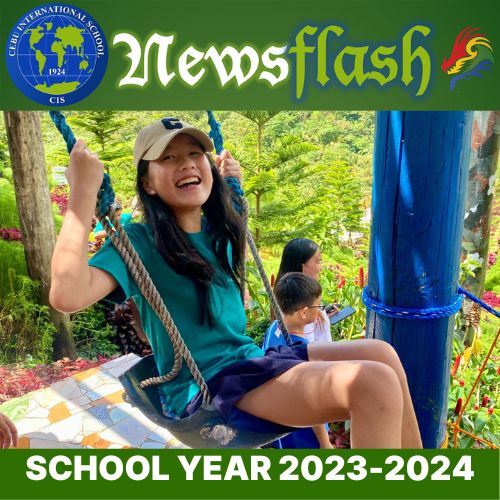
Admin News
by Dr. Gwyn Underwood, Superintendent
Advantages of the CIS Week Without Wall (WWW)
Why does CIS take the time, effort, and money to engage students in an experiential learning week of activities outside of the regular classroom and schedule each year?
Well, in addition to creating memorable experiences that provide lasting memories and positive associations with learning, our WWW activities are designed to tap into the following areas
Enhanced learning opportunities:
- Active participation: Students move beyond passive learning and actively engage with the material through hands-on experiences, leading to better understanding and retention.
- Real-world application: They apply classroom concepts to real-world scenarios, fostering critical thinking, problem-solving, and deeper connections to the subject matter.
- Diverse learning preferences: Students engage with different learning preferences such as visual, kinesthetic, and auditory styles in unique ways, enabling them to strengthen the styles they prefer, and develop those they may not be as comfortable or adept with.
- Personal growth: Fosters independence, self-reliance, resilience (grit), and teamwork through collaboration and challenges encountered during the experiences.
- Increased motivation: Engaging and interactive activities can spark curiosity and a love for learning, improving overall student motivation.
- IB Learner Profile attributes: Out-of-class activities provide unique opportunities for students to develop desirable IB Learner Profile attributes, such as being pushed out of their comfort zones through unfamiliar situations to develop as risk-takers (courageous), and developing their caring and principled attributes to support members of their team when challenged by difficult competitive team activities.
Character-developing life skills generation (supplementing in-class development using the IB ATL (approaches to learning) framework):
- Develop life skills: Students build essential life skills like communication, collaboration, adaptability, and resilience through real-world experiences.
- Career exploration: Provides opportunities to explore that may relate to potential career paths, and develop relevant skills that will lead to making informed career choices.
- Community connections: Fosters connections with local communities and organizations, promoting civic engagement and social awareness as an extension of our ongoing Service as Action and CAS (Creativity, Activity, and Service) program.
- Belonging and social connectedness: Students are challenged to consider their valued place in the community and their relationship with others, developing awareness and appreciation of their belonging to their peers, class, and school community.
What skills and learning opportunities can you identify benefiting students in the photo examples provided?
- Top: Star-gazing during a sleepover (G2-3)
- Top 2: Breakfast chef duties during a sleepover (G6)
- Top 3: Zip-lining at EVO Nature Camp (G4-5)
- Bottom 1: Delivering donated volleyball net pole to Caohagen (G8-10)
- Bottom 2: Fish caught by students (and then cooked and eaten!) (G7)
As you look over the rest of the WWW photos in this Newsflash, continue to analyze the photos to identify which of the benefits noted above applied in each of the activities (there are usually multiple benefits in each activity)!
Overall, we believe WWW provides a valuable opportunity for students to deepen their understanding, develop essential skills, and build positive memories of learning. However, it’s important to consider the potential challenges and ensure the program is well-planned, accessible, and aligned with learning objectives.
“Character counts way more than we typically realize. Determination, resourcefulness, and resilience are more important for achieving greatness than innate ability, grades, or prestige of university.” – Adam Grant
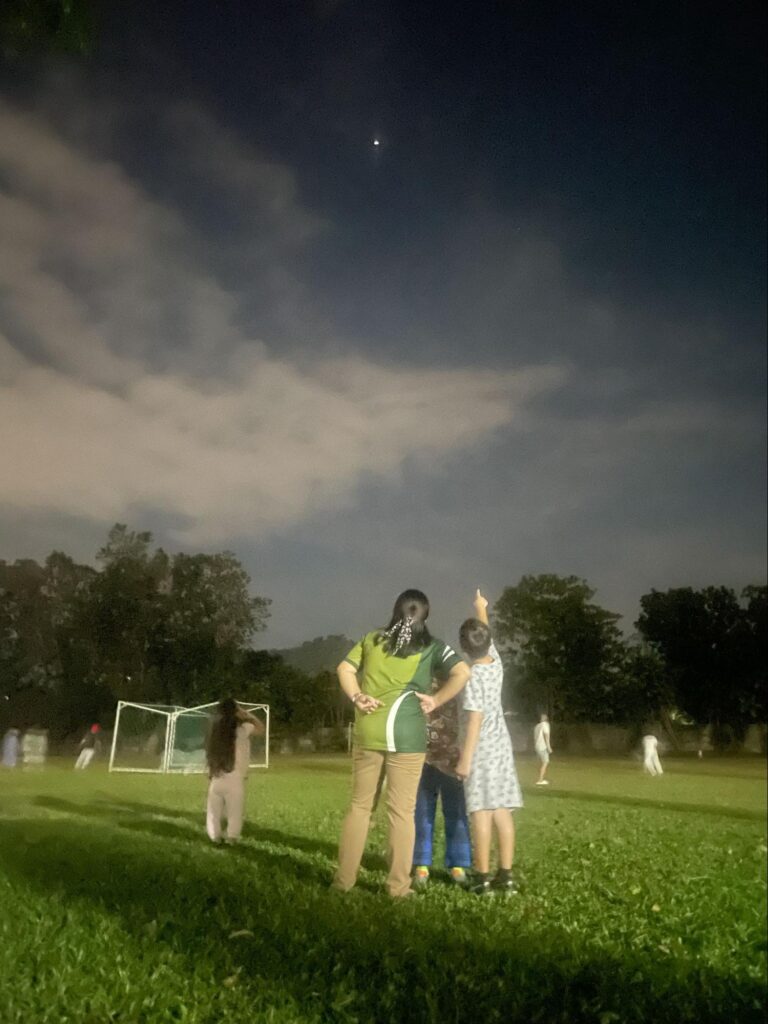
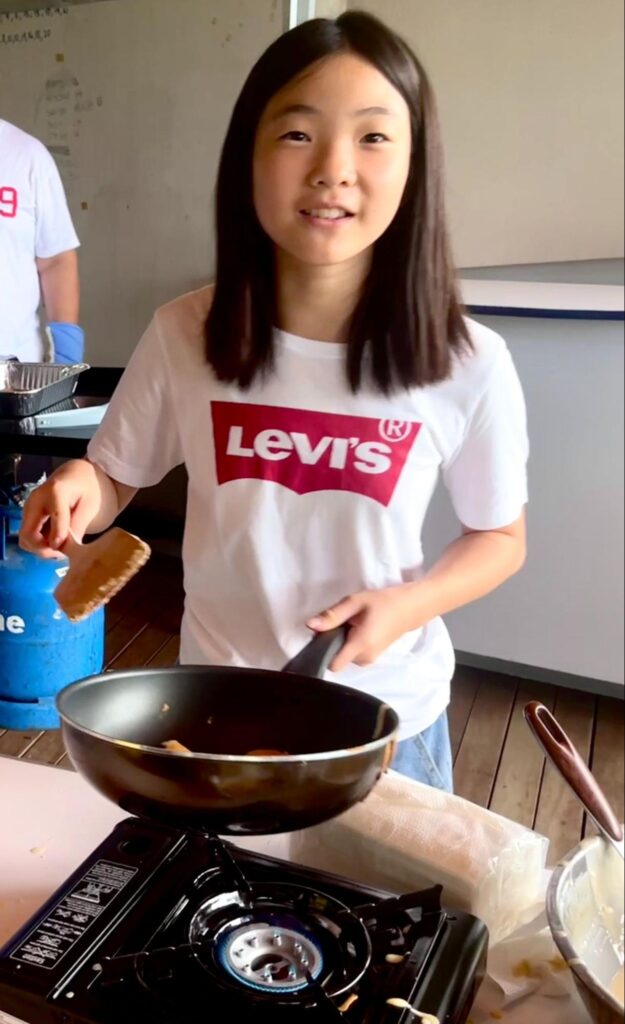

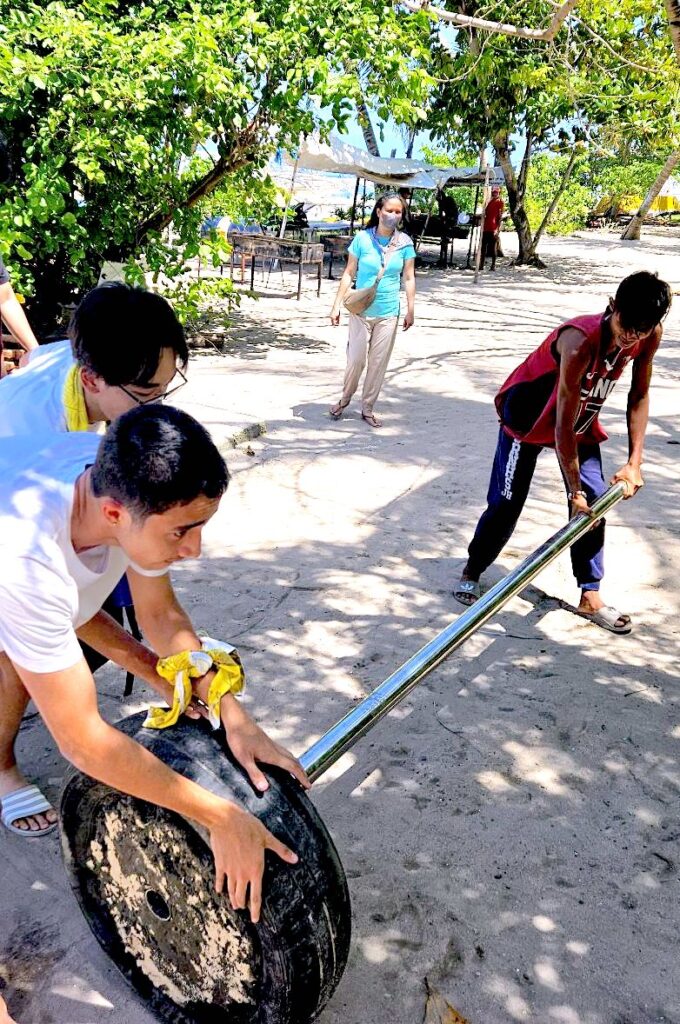
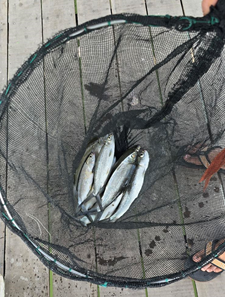
Have a restful weekend students, and we look forward to you returning rejuvenated next week. A huge thanks to all the faculty & staff who put so much time into organizing the activities – it is a huge amount of work to ensure it is safe, beneficial, and interesting. A special thanks to parents who assisted in various ways, such as donating vans to keep costs down.
Upcoming events of note
- Feb 24 (Sat): Public Holiday (Cebu Charter Day)
- Feb 25 (Sun): Public Holiday (EDSA)
- Feb 27 (Tue): G5 Students & Parents Info Session
- Feb 27 (Tue, 7:30): PTA Coffee Morning
- Feb 28 (Wed, 7:45): PYPx Launch (G5 Parent/Student Workshop @ Canteen Annex)
- Feb 29 – Mar 1: CIS-PTA Flea Market for a cause @ canteen annex
- Mar 8 (Fri): HAD3 / End of 3rd Quarter (AM only, no classes in PM)
Please refer to the CIS Event Calendar for the complete calendar of school events.
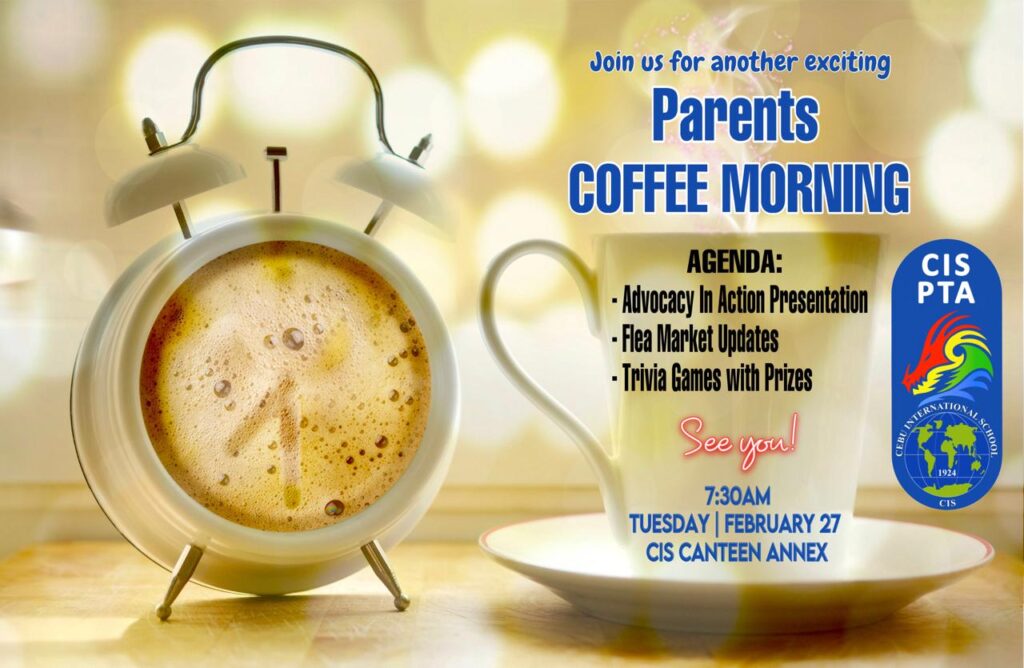
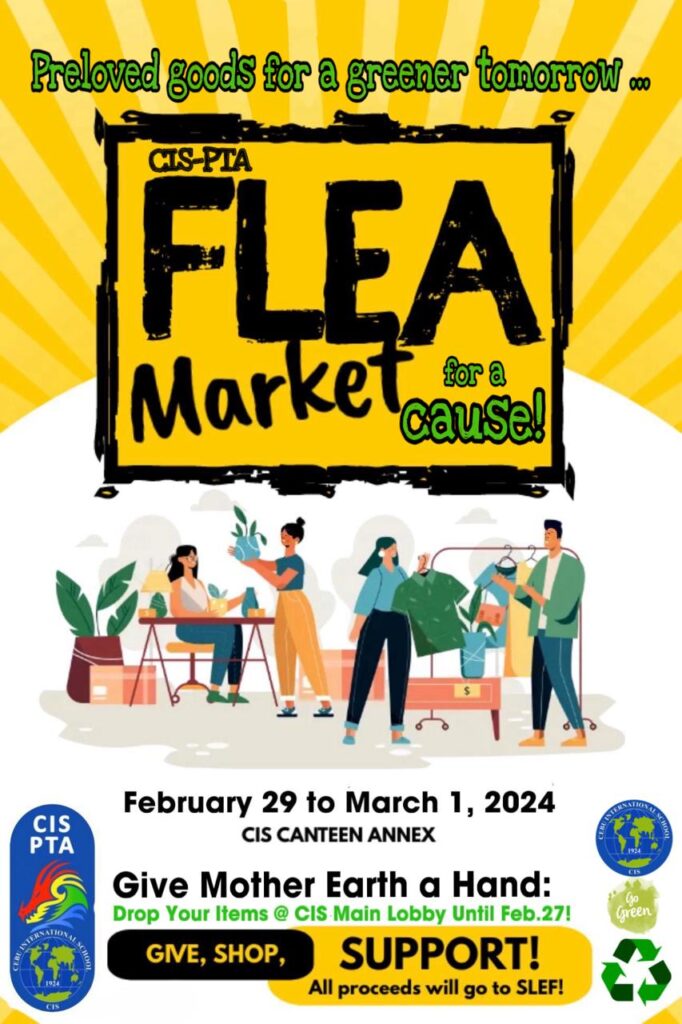
EY & K/G1: Week Without Walls
by Aimee Valenzona (EY Homeroom Teacher), Ann Codoy (EY Homeroom Teacher), Tara Bersabal (K/G1 Homeroom Teacher), Belen Tubilan (K/G1 Homeroom Teacher)
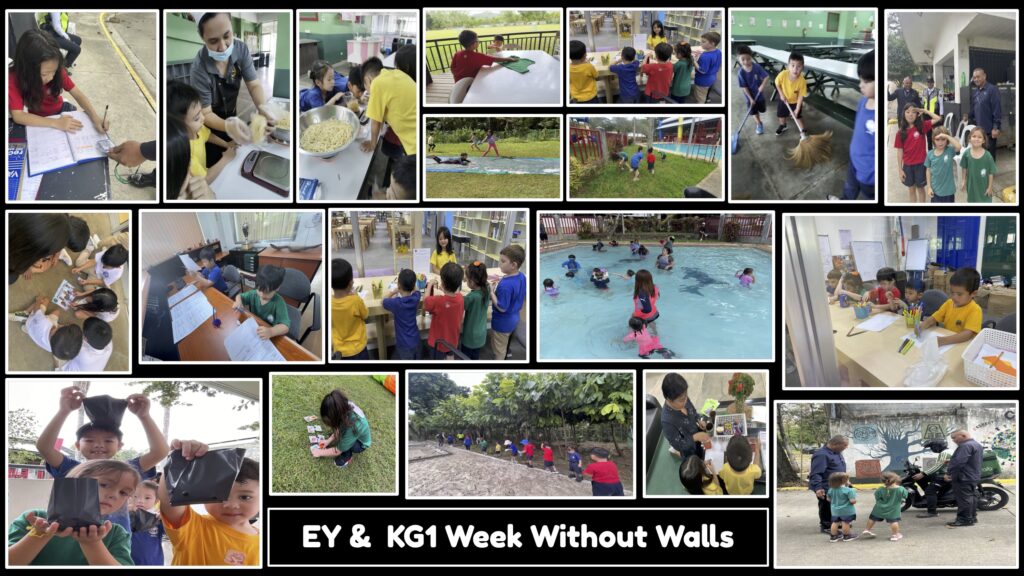
During our Week Without Walls, the Lower Elementary students engaged in diverse activities focusing on environmental stewardship and community engagement. They immersed themselves in projects preserving terrestrial ecosystems and assisted school staff with their responsibilities. Day two featured Water Play games and slip-and-slide adventures, adding fun to the learning experience. Off-campus team-building activities on day three included tug of war and exploring various outdoor activities such as fish feeding, eco-trail, shirt painting, and Adventure Zone experience. Day four highlighted the importance of simple machines and featured specialized Wheels Day for Early Years students, fostering both learning and community bonds throughout the week.
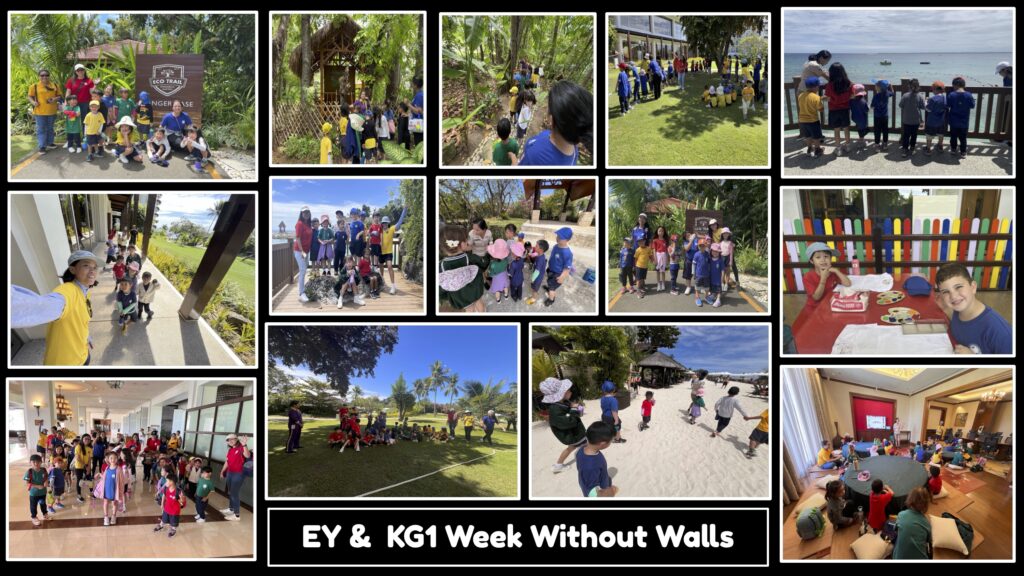
Grade 2/3: Week Without Walls
by Maffy Ocleasa (Grade 2 Homeroom Teacher), Katrina del Mar (Grade 3 Homeroom Teacher), Jojie Malinao (Philippine Language and Culture Teacher), Dina Melwani (LA-Spanish Teacher), Jiana Liu (LA-Mandarin Teacher)
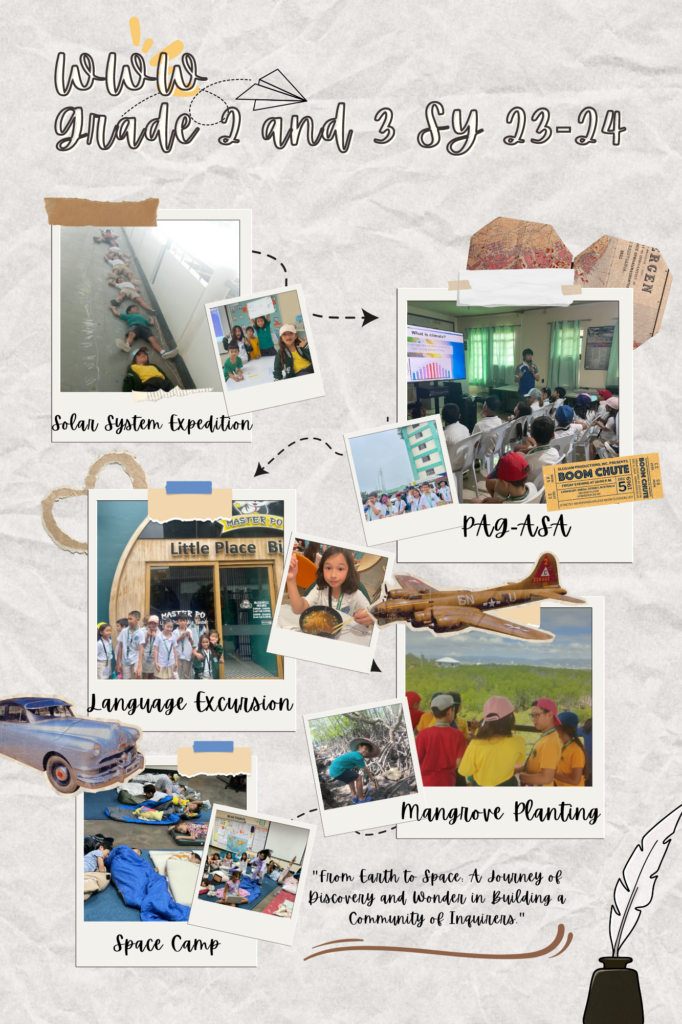 The Grades 2 and 3 astronaut trainees began their WWW by embarking on The Great Solar System Expedition, embodying the IB learner profile attributes of inquirers, knowledgeable, and thinkers. To deepen their understanding of Chinese and Spanish language and culture, they had the opportunity to taste authentic cuisine, fostering open-mindedness and cultural appreciation.
The Grades 2 and 3 astronaut trainees began their WWW by embarking on The Great Solar System Expedition, embodying the IB learner profile attributes of inquirers, knowledgeable, and thinkers. To deepen their understanding of Chinese and Spanish language and culture, they had the opportunity to taste authentic cuisine, fostering open-mindedness and cultural appreciation.
Additionally, the visit to the PAGASA Weather Station and Master Po enhanced their knowledge and aligned with UN SDGs 4 (Quality Education) and 12 (Responsible Consumption). On the second day, they engaged in service learning through mangrove planting at the Cordova Mangrove Rehabilitation Center, demonstrating their commitment to UN SDGs 14 (Life on Land) and 15 (Life Below Water). In the last two days of our WWW, they applied and demonstrated their knowledge, understanding, and skills about our central idea, “The Earth’s position in the solar system supports a sustainable environment that changes cyclically and influences adaptations,” as well as practiced their self-management and collaboration skills by engaging in various space camp activities.
Grade 4 & 5: Week Without Walls
by Aimee Underwood (Grade 5 Homeroom Teacher/Asst PYP Coordinator), Sten Coppin (Grade 4 Homeroom Teacher), Jade Berdon (Grade 5 Co-Homeroom Teacher), Vangie Belono-ac (LA-English Teacher/OLC Coordinator), MJ Cordova (Media Literacy Teacher), Jessa Luntayao (Philippine Language and Culture Teacher), Demy Dargantes (PHE Teacher)
Grades 4/5 had an exciting week! We visited the Umapad Community, where students engaged in reading and games, fostering new friendships and returning with a heightened sense of empathy and appreciation. Following this, we embarked on a 2-night, 3-day adventure at EVO Nature Camp, focusing on teamwork, collaboration, and essential life skills.
During our time at the camp, students immersed themselves in a variety of activities, including hiking, ziplining, team-building exercises, workshops, talent shows, and tree planting. Through these experiences, they developed IB learner profile attributes of being caring, open-minded, and risk-takers. The week was truly memorable and will undoubtedly be cherished in the years to come.
Grade 11: Visual Arts
by Ms. Gerri Ancajas-Jumao-as, Visual Arts Teacher
The Gr. 11 Visual Arts students delved into 3D art forms this quarter. In this exploration, they experienced and navigated the intricacies of sculpting, modeling, and rendering in three dimensions. Applying different techniques with the use of different tools, these young artists expressed their imagination and creativity in manipulating clay, plaster, and wire.
Students documented their art making process in their Process Portfolio where they highlighted their experimentation, exploration, manipulation and refinement in handling the clay, plaster, and wire. They also documented their technical accomplishments showing evidence of understanding and application of the use of materials, ideas, and practices appropriate to visual communication.
The extracts and artworks below showcase how the students have engaged with the chosen media and technique, and the development of their ideas.
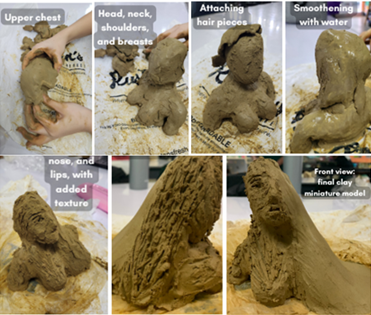 Though I planned to not focus on precision, I underestimated the carving process and was not fully satisfied with how the face turned out as it does not resemble a human compared to Miller’s portraits despite their rough textures. The hair also looks like a scratched surface. After making the melted portion of the sculpture, it ended up looking like sand on a hill instead of liquid. This is because of lack of research into inspirations for my design plan. I could have referred to photos of melted faces and video tutorials on basic clay sculpting to illustrate my concept better. I learned the importance of the skills of patience, manual crafting, and preparation. My lack in these areas led to the failure of the experiment. I also did not familiarize myself enough with human anatomy, so I had no memory of it to utilize while sculpting. If I had developed these skills in my experiment, I could have prepared myself better for molding a larger model.
Though I planned to not focus on precision, I underestimated the carving process and was not fully satisfied with how the face turned out as it does not resemble a human compared to Miller’s portraits despite their rough textures. The hair also looks like a scratched surface. After making the melted portion of the sculpture, it ended up looking like sand on a hill instead of liquid. This is because of lack of research into inspirations for my design plan. I could have referred to photos of melted faces and video tutorials on basic clay sculpting to illustrate my concept better. I learned the importance of the skills of patience, manual crafting, and preparation. My lack in these areas led to the failure of the experiment. I also did not familiarize myself enough with human anatomy, so I had no memory of it to utilize while sculpting. If I had developed these skills in my experiment, I could have prepared myself better for molding a larger model.
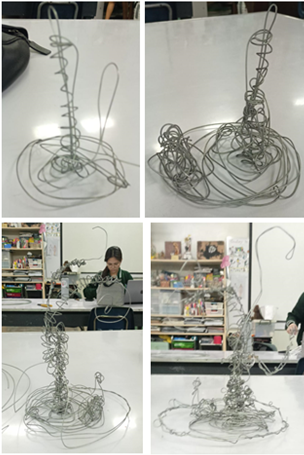 Conducting this experiment has enlightened me, as an artist, to the fact that employing three-dimensional techniques on a two-dimensional scale is not merely about creating depth and avoiding a monotonous focal point. Rather, it is about recognizing that in order to effectively convey the narrative I wish to express, I must emphasize a specific element to enhance the sensation of novelty and uniqueness. I would like to change how I used the effect of the tree being the center of attention because it created less movement which was something I really wanted to emphasize in this experiment.
Conducting this experiment has enlightened me, as an artist, to the fact that employing three-dimensional techniques on a two-dimensional scale is not merely about creating depth and avoiding a monotonous focal point. Rather, it is about recognizing that in order to effectively convey the narrative I wish to express, I must emphasize a specific element to enhance the sensation of novelty and uniqueness. I would like to change how I used the effect of the tree being the center of attention because it created less movement which was something I really wanted to emphasize in this experiment.
 The final result turned out fairly different from how I’d wished and imagined it to turn out. However, even in such a turn of events, the same desired effect was still created, only that it was executed quite differently. More work is evidently needed when it comes to facial proportions and the sculpting process, especially when done on much smaller sculptures in contrary to larger models. In my use of the little trinkets, but mostly sparkly gems, what’s represented is the products themselves but more than that, it is a representation of their value to the person. As we know, shiny things like gold, crystals, and gems are held at high monetary value and are greatly sought after for their beauty. The same idea is brought about in the overconsumption of different products, skincare, and beauty products in this case particularly.
The final result turned out fairly different from how I’d wished and imagined it to turn out. However, even in such a turn of events, the same desired effect was still created, only that it was executed quite differently. More work is evidently needed when it comes to facial proportions and the sculpting process, especially when done on much smaller sculptures in contrary to larger models. In my use of the little trinkets, but mostly sparkly gems, what’s represented is the products themselves but more than that, it is a representation of their value to the person. As we know, shiny things like gold, crystals, and gems are held at high monetary value and are greatly sought after for their beauty. The same idea is brought about in the overconsumption of different products, skincare, and beauty products in this case particularly.
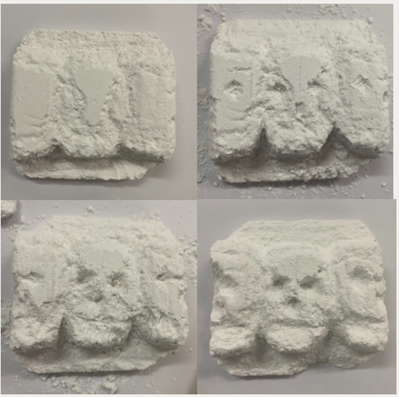 The ratio mixed for the plaster is significantly important as when more water is added, the plaster becomes crumbly and very difficult to work with and keep its shape together. Another lesson learned is cutting out large chunks to get the general shape of the figure and then going into detail with a smaller tool. In this experiment, I created a relief art piece of a skull which I liked due to how the features protrude out of the plaster which added dimension and visual interest to the artwork. I created a low relief design but could have added interest in the background behind the skulls.
The ratio mixed for the plaster is significantly important as when more water is added, the plaster becomes crumbly and very difficult to work with and keep its shape together. Another lesson learned is cutting out large chunks to get the general shape of the figure and then going into detail with a smaller tool. In this experiment, I created a relief art piece of a skull which I liked due to how the features protrude out of the plaster which added dimension and visual interest to the artwork. I created a low relief design but could have added interest in the background behind the skulls.
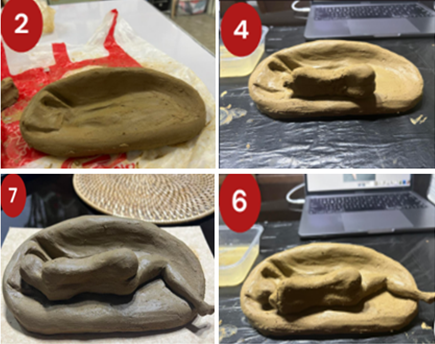 Reflecting on my experience with mud clay, I appreciate its malleability, giving me access to the flexibility of both an additive and subtractive sculpting process. This dual approach granted me greater control over shaping my piece. Working with clay has provided me with a hands-on experience of learning and familiarising different aspects of the body that give it that life-likeness that Ragir’s work so masterfully possesses. Additionally, the clay has a sort of organic aesthetic to it, which I think contributed to the visual impact of the sculpture, as the sentiment of the piece is often something people let grow within themselves and sometimes, albeit subconsciously, foster it themselves. Capturing the essence of both the figure’s physical presence and absence through the depressions and protrusions within the piece, “At Arm’s Reach” serves as a metaphor for self-induced placebos.
Reflecting on my experience with mud clay, I appreciate its malleability, giving me access to the flexibility of both an additive and subtractive sculpting process. This dual approach granted me greater control over shaping my piece. Working with clay has provided me with a hands-on experience of learning and familiarising different aspects of the body that give it that life-likeness that Ragir’s work so masterfully possesses. Additionally, the clay has a sort of organic aesthetic to it, which I think contributed to the visual impact of the sculpture, as the sentiment of the piece is often something people let grow within themselves and sometimes, albeit subconsciously, foster it themselves. Capturing the essence of both the figure’s physical presence and absence through the depressions and protrusions within the piece, “At Arm’s Reach” serves as a metaphor for self-induced placebos.
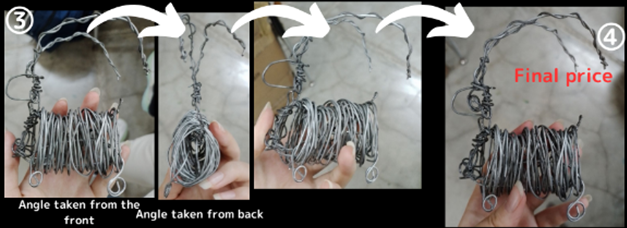 I used a two-dimensional rectangle to create the foundation, and because the wire did not balance the rectangle’s shape, when I started to roll up the wire around the body, I found it difficult to maintain the main body part of the goat as by the time I began rolling the wire for the body portion, the rectangle had taken on the shape of a trapezoid. During the process of creating the artwork, I realized that the foundation is the most crucial component on which I should concentrate the most. This is because the foundation determines how the entire three-dimensional structure and its balance function together. For improvement, I will first create a three-dimensional rectangular form for the base rather than a two-dimensional one. In that way, the form will be more stable and retain the rectangle shape of the body.
I used a two-dimensional rectangle to create the foundation, and because the wire did not balance the rectangle’s shape, when I started to roll up the wire around the body, I found it difficult to maintain the main body part of the goat as by the time I began rolling the wire for the body portion, the rectangle had taken on the shape of a trapezoid. During the process of creating the artwork, I realized that the foundation is the most crucial component on which I should concentrate the most. This is because the foundation determines how the entire three-dimensional structure and its balance function together. For improvement, I will first create a three-dimensional rectangular form for the base rather than a two-dimensional one. In that way, the form will be more stable and retain the rectangle shape of the body.
 Carving is what gives an otherwise monotonous plaster block a final form. There’s also “decorational carving” which was impossible for me to do because the carving tool I used were inconsistent. This experiment made me realize that I lacked experience in creating 3D models that weren’t made of paper, as I had mostly worked with paper while at my old school. After conducting an experiment, I’ve come to realize that relying solely on paper to create 3D models have hindered my growth as an artist. To challenge myself, I plan to work with a variety of mediums, such as plaster, to recreate the entire podium and building. While I could add intricate exterior details, I prefer to use paper exteriors for a unique touch.
Carving is what gives an otherwise monotonous plaster block a final form. There’s also “decorational carving” which was impossible for me to do because the carving tool I used were inconsistent. This experiment made me realize that I lacked experience in creating 3D models that weren’t made of paper, as I had mostly worked with paper while at my old school. After conducting an experiment, I’ve come to realize that relying solely on paper to create 3D models have hindered my growth as an artist. To challenge myself, I plan to work with a variety of mediums, such as plaster, to recreate the entire podium and building. While I could add intricate exterior details, I prefer to use paper exteriors for a unique touch.
College & Careers Counselor Corner
by Ms. Jenny Basa, College Counselor
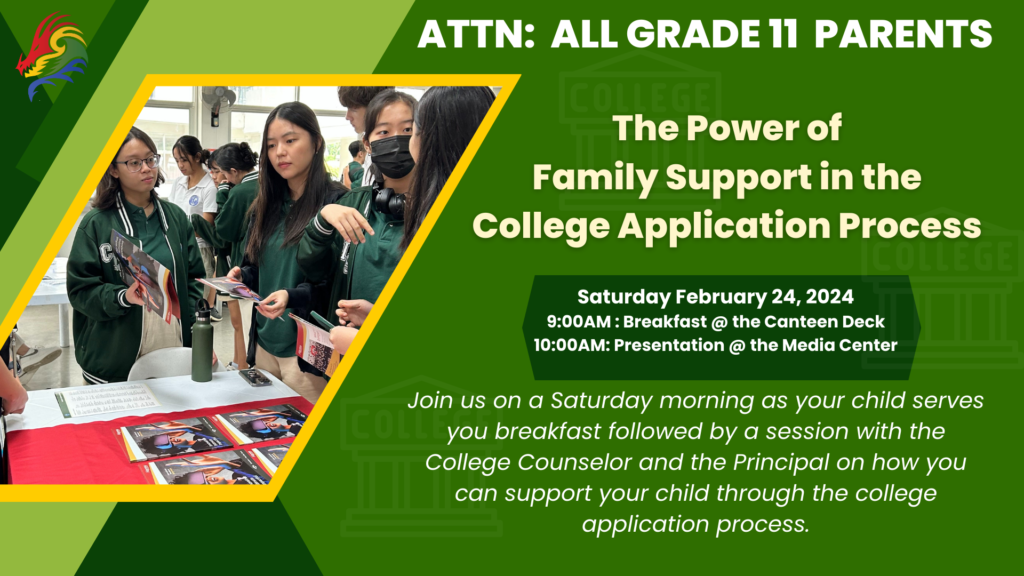
DATE
February 24
Saturday
1:30 – 4:00 pm
Fili Ballroom 1
Nustar Resort
Link to register
EVENT
Seminar: Define your Hospitality Career Roadmap – ideal for students interested in a hospitality/business career.
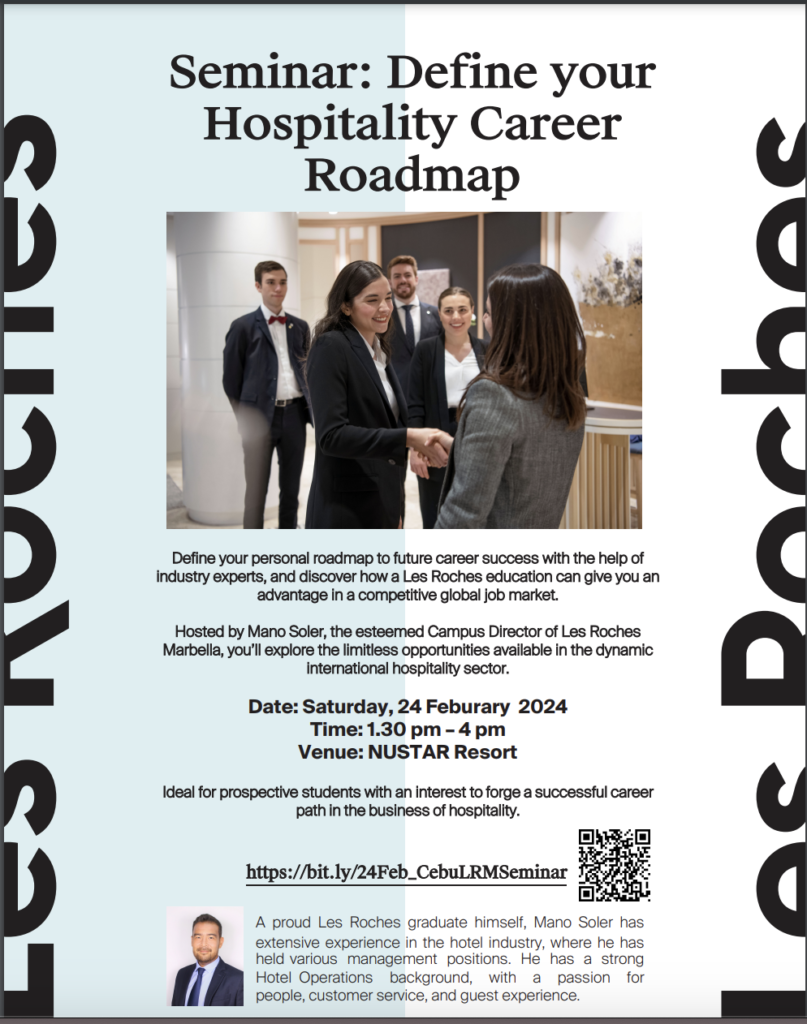
March 2 Saturday
12PM – 5PM
SEDA CENTRAL BLOC – Cebu IT Park
Study Abroad Hybrid Expo Philippines 2024 in Cebu by AMS Global
Participating Universities and Colleges
Australian Catholic University
Australian Learning Group & IKON Institute of Australia
Charles Sturt University
Collarts
Conestoga College
CQUniversity
Deakin University
Flinders University
Griffith University
Holmesglen Institute
Humber College Institute of Technology and Advanced Learning
James Cook University Australia
James Cook University Brisbane
Kaplan Business School Australia
La Trobe University
Macquarie University
Monash University
Murdoch University
QUT
RMIT
Sault College
Southern Cross University
Sydney Met
TAFE International Western Australia
The University of Adelaide
The University of Sydney
The University of Western Australia
Torrens University Australia
University Canada West
University of South Australia
University of Tasmania
UNSW Sydney
UTS College
Victoria University
William Angliss Institute
March 5
Tuesday
9:00 – 9:40AM
Canteen Annex
Link to sign up
University of Sydney (Australia) – face to face chat with the recruitment rep of U of Sydney and learn about the application process, programs and scholarship offered.
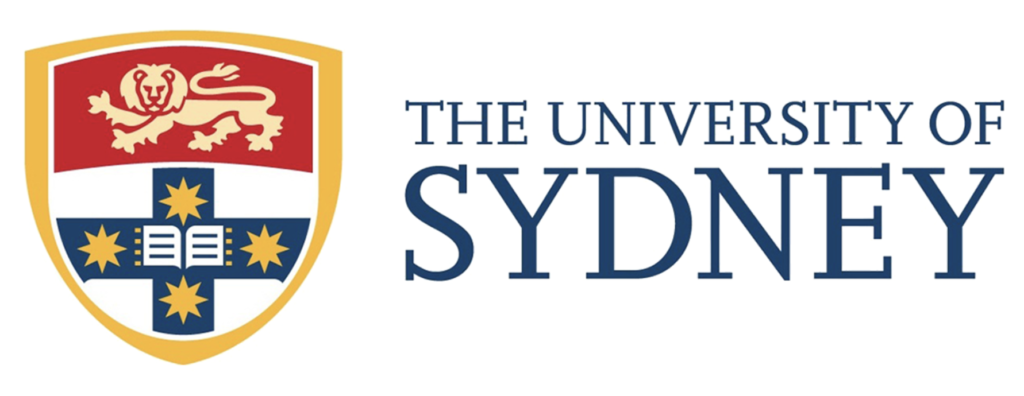
Education USA Events in March
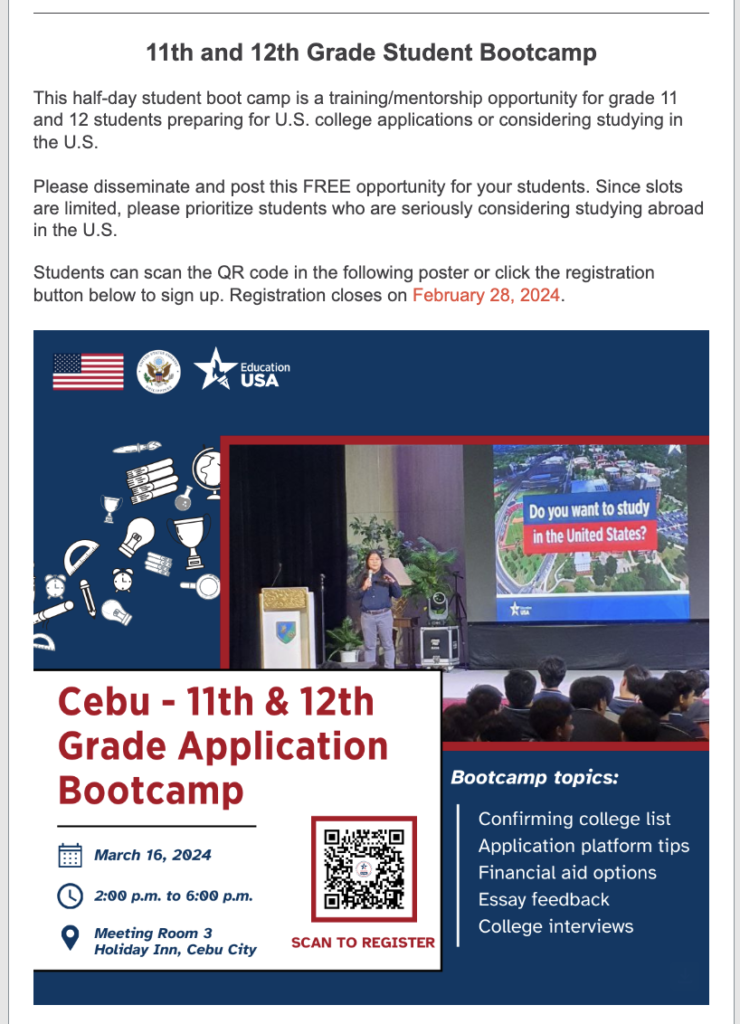
SAT Update
| Test Date | Deadline for Registration, Changes and Regular Cancellation |
| March 9, 2024 | February 23, 2024 |
| May 4, 2024 | April 19, 2024 |
| June 1, 2024 | May 16, 2024 |
To register for the SAT, you may click on this link. If you need assistance or have any questions, please feel free to email Ms. Jenny Basa at jbasa@cis.edu.ph.



